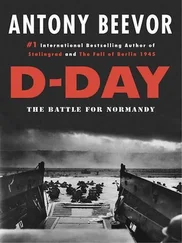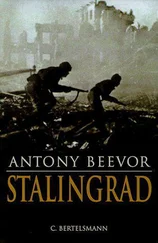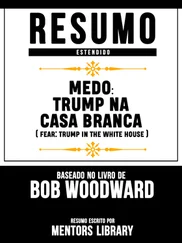1 ...6 7 8 10 11 12 ...18 Sean dodged nimbly in amongst the machines—it struck me how awkward and fragile aircraft were in an enclosed space, with all their gawky projections and wires and sharp edges and delicate surfaces—and began to loosen the mesh. He pushed a plane back a few inches, pulled another up (by its prop) to fill the gap, nudged a tail-plane round, turned a propeller a few degrees to clear a wing. In this way he cleared enough of a passageway that, by raising and lowering the tail to clear a tail-fin or a bracing wire, he could just extricate the Thruster without any part of it quite touching another machine. Finally it was clear enough for him to put the tail down and trundle it onto the sunshine of the concrete fairing in front of the hangar. For the first time we had the chance to examine our new purchase properly.
The overall effect was of a large toy aeroplane with a cheeky expression. The rounded nose of the fibreglass pod in which the pilot and passenger were enclosed, and which protected them from the weather and the airstream, gave it the smug, perky expression of a Pekinese—cute or irritating, according to taste. The wings were blue and red, the fibreglass pod was white and the tail blue. It struck me that we could have given more thought to the colour scheme. Large white capitals spelt out her registration letters—Golf Mike Victor Oscar Yankee, or G-MVOY—on the underside of the wings and on the tail. The spotless new tyres and glinting windshield added to an overall effect of pristine prissiness which had been absent from the streaked wings, faded fabric and worn-in, workaday appearance of the machine at Popham. As the progeny of more than three quarters of a century of aeronautical research and development, it was hard not to think that something was missing. The engine had a pull-start like a lawn mower. The seats were the moulded plastic, school stacking variety (minus the metal legs). The tail-wheel was off a supermarket trolley. One of the flight controls looked uncannily like—and, on closer inspection, was—a nylon cord with a bathroom light switch on the end. The impression was simply of a machine unfinished. Her wings, however, were at least a version of traditional doped canvas (if a modern, Dacron-Terylene one) and she had a wooden propeller. ‘Right,’ said Sean. ‘Let’s get Thrashing.’

I went up first, leaving Richard reading the paper in the car. Once Sean had me strapped in to the left-hand seat, he told me to hold the throttle lever (car hand-brake position, down on my left) with my left hand, take the stick in my right hand, and steer with my feet on the rudder pedals. Gingerly I opened the throttle from its tick-over rate of 3,000 rpm. We didn’t move at all until the revs had reached at least 5,000 rpm, when we sprang forward across the fairing. ‘Steady,’ said Sean, promptly reducing the power with the dual lever his side.
It all felt most bizarre. Although pressing the left pedal turned the plane left, and vice versa, there was a slight delay in the reaction (and it worked much less effectively at low speed). This made it tempting to over-react, and our path towards the airfield commenced in an undignified zig-zag. When we got to the end of the runway, Sean stopped us on a slight upslope into wind and showed me the checks I had to do. These were mercifully few, boiling down to giving the stick a good stir to see that the controls were ‘full and free’, checking our seat-belts and helmet chin-straps were done up, that the few instruments were reading within their limits, and that there was sufficient fuel in the tank. Then he instructed me to taxi round in a circle (to check for any ‘traffic’ in the circuit) and line up. ‘Off you go then. What are you waiting for?’ he said, when I had done so.
I briskly opened the throttle and immediately incurred criticism.
‘ Gently —everything you do in flying should be gentle. But positive. And open it fully: that’s only three quarters.’ We began to move forward along the grass, picking up speed. ‘Right, stick forward to raise the tail.’ As the tail came up, the ride stopped feeling rough and bumpy, and she moved much more easily. ‘See? Feel how much better she runs. Right, keep her straight with the rudder pedals. Now. Once you can feel that the tail’s up, just gently let the stick back to where it naturally goes, in the centre. Gently. That’s right. That’s all you have to do. Let the speed pick up now, and…there you are.’ Suddenly the ride felt smoother still, and I realised that the grass underneath the wheels was sinking away from us. ‘See? Simple as that.’ And it really was. The plane took off by itself.
I knew what to do now, from my Cessna lessons, and began to pull the stick back to make us climb. Sean briskly shoved it forward again. ‘Don’t pull the stick back yet: you’re not flying well enough: you’ll stall and crash. Just let the speed build up ’til she’s flying nicely. OK, now…just ease the stick back.’ A big flock of starlings fluttered into the air and wheeled away from us ahead and to the left.
In front of us, as we climbed, I could see a town. ‘Dereham,’ said Sean, pointing out the characteristic water tower, a big, ugly, conical edifice, as if a giant, round, plastic funnel had been jabbed into the ground as a mould and filled with concrete. (I did not realise then how much I would grow to love that water tower.) I could see cars moving along the A47 to Norwich. South of the airfield (though at the time I had no idea of my bearings) was the village of Barsham Green, with its church tower. There was another church, of worn and weathered brick and flint and a round tower on the north side of the airfield, and, to the east, a winding river meandered through lakes and gravel pits. A distinctive enough setting, perhaps, for an airfield, but the moment I looked away it disappeared and I was lost over an infinite patchwork mat of countryside.
That is pretty much all I took out of that first lesson. No doubt we practised a few turns and manoeuvres, but in no time we seemed to be back over the airfield and Sean was telling me to reduce the throttle to 5,000 rpm for my descent. ‘ Gently. Christ ,’ he said, as I inadvertently overdid it and we started to plummet. The approach to land was by far the hardest part. To judge, in three dimensions, an even descent from where I was in the air, to a specified point on the ground—let alone carry it out by co-ordinated manipulation of stick and throttle—was a task beyond impossible. ‘Right. I have control,’ said Sean, as I nearly hit a hedge a field short of the Barsham runway. He gave a burst of throttle which carried us neatly to the airfield.
After the confinement and intensity of the cockpit, it was good to stretch, peel off my flying suit and feel the warm air playing around my arms and ankles. The temperature had been about right at 1,000 feet with my ozee suit on. Back on the ground it was uncomfortably warm. As I slumped onto the grass, Coke in hand, and Richard strapped himself in, Sean shouted. ‘Get on with your ground school, Ants,’ (he had taken to calling me ‘Ants’). ‘Don’t just laze in the sun.’ Circumstances, however, were not conducive. The sun blazed from a spotless blue sky, with the breath of a breeze, just enough occasionally to twitch the big windsock on the west of the airfield.
For lunch Sean took us to the Barsham canteen. ‘We could go into Drear-am,’ he said doubtfully (Sean called East Dereham ‘Drear-am’). ‘But it’s hardly worth it.’ He referred, I knew, to Barsham’s labyrinthine one-way system with its platoons of sleeping policemen and 6 mph speed limit, enforced by the military police with the true viciousness of total boredom. The canteen would today win awards for its authentic war-time-rationing experience. From its bare, wiped-down counters all that was available were triangular meat paste sandwiches on curling Homepride (and maybe an apple or two) and Nice, Rich Tea or Digestive biscuits. The one concession to indulgence were some ‘Club’ biscuits, which turned out to be cracked and pale with age beneath the silver paper. A woman in a nylon apron served cups of stewed tea from a battered aluminium teapot.
Читать дальше













